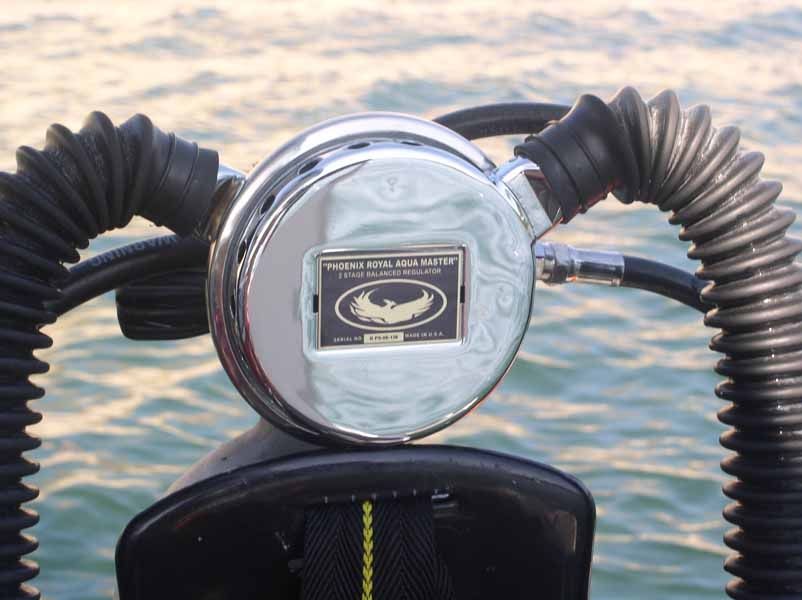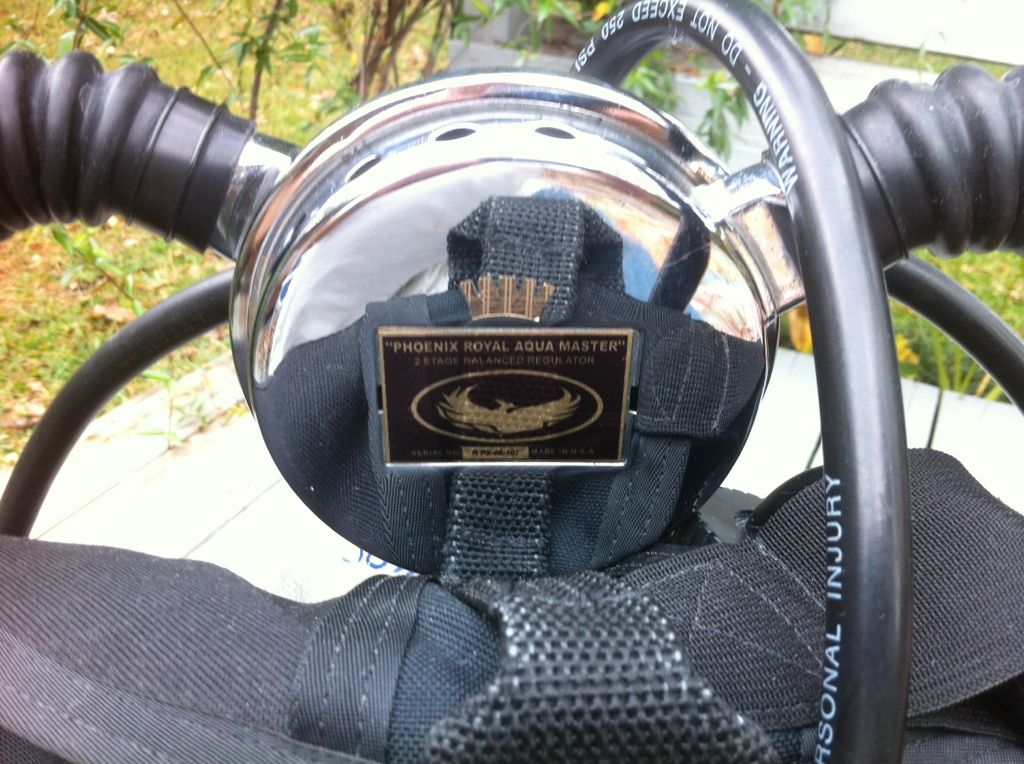A couple corrections are in order.Quick history lesson, the big manufacturers tend to focus on either piston or diaphragm style first stages. Apeks and Poseidon are the big boys in the Diaphragm side, neither of them make a piston first stage, Scubapro and now Atomic *bunch of ex Scubapro engineers btw* are basically all pistons. Scubapro does make the MK11, and MK17 which are diaphragm *I think these are actually a Tusa design that was adopted by SP*, but you don't see them often, the MK25 and MK2 are much more common and generally the ones you see when people think of Scubapro first stages.
Diaphragm regulators are generally preferred to piston regulators in ice diving conditions mainly due to their ability to be sealed much more easily. Poseidon dominates this field with Apeks almost tied for 2nd. Apeks is probably more popular, but more of the cold water Navy's turn to Poseidon.
The MK17 is a diaphragm regulator that is sealed, so shouldn't have any cold water issues there, the MK25 can be sealed, but it involves packing the housing with grease, and it has had a lot of issues with cold water performance over it's lifetime. I would steer clear of pistons for any cold water diving, not that they can't be used or aren't being used, but there are much better designs out there for cold water. Hog D1/D3, Apeks full series, Poseidons with the environmental caps on them, hell even without them the Poseidons generally have less freezing problems than the piston designs, Dive Rite, etc. Any sealed diaphragm will out perform a piston in cold water.
Scubapro second stages are a non-issue, the designs of the seconds are all pretty much the same aside from the servo assisted regs from Poseidon and Oceanic/Hollis, so it is all about the first stage design.
Scubapro sold the Mk 14 for awhile which was a non-scubapro designed regulator to fill a perceived gap for a diaphragm first stage until Scubapro completed the design of the Mk 16. The MK 16 is a totally Scubapro designed regulator. Scubaro however farms out production of their regulators to Tabata, and Tabata has first rate manufacturing facilities, so it makes sense to do that. Under the agreement however, Tabata was allowed to market the Mk 16 with some cosmetic changes as a TUSA regulator. (TUSA = Tabata USA.)
The Mk 17 was a refinement of the Mk 16 to include a new longer lasting seat design, a larger working range, and a sealed ambient chamber. Halcyon sells this same Mk 17 first stage (as well as the Mk 25) under a similar agreement with a modified trim package to make them look cosmetically a little different.
------
In practice, the old Mk 5, Mk 10, Mk 15 and very early Mk 20 first stages with the SPEC (Silicone Protected Environmental Chamber) kits worked quite well under the ice, provided that you properly packed the environmental chamber to minimize voids in the silicone (something of a lost art now) and kept it topped off over the season (the SPEC boots helped but they were not perfect).
In contrast the later Mk 20 and all the Mk 25 first stages with their various and constantly upgraded cold water kits were quite freeze prone in sub 40 degree water. I used to to a great deal of ice diving and 35 degree deep great lakes wreck diving, and I went from using SPEC kitted MK 20s to Mk 17s based on dive buddies who had very unsatisfactory dives with the Mk 25. in 40'ish degree water with perfect cold water diving techniques the Mk 25 can be made to work, but it's marginal.
The sealed Mk 17 is a much better choice and it is essentially bullet proof under the ice. You can make it freeze up, but you have to free flow it to the point that you get a giant ice ball around the first stage that then covers the ambient chamber diaphragm and keeps depressed. Odds are you'll be out of gas by then anyway.
With that all said, the large ambient pressure holes in the Mk 16 allowed it to preform surprisingly well in very cold water, including ice diving, provided you used good technique and did not use the reg at all (including testing, inflating the BC, drysuit, etc) until the first stage was entirely submerged, and provided you broke up the usage in smaller bits, such as not inflating the BC, and dry suit while inhaling or at the same time, and not using a long blast on the inflator after you dropped like a Stuka to the bottom.
The Mk 2 with it's larger ambient pressure holes also worked pretty well, in part because the lower flow rate prevented some of the abuses that cause a freeze flow.
----
In the distant past companies like Poseiden and US Divers used ambient chambers filled with alcohol (poseiden) or silicone oil. These were generally a major PITA and the oil would expand in warm weather, bulging the diaphragm which would eventually leak all over the rest of your dive gear, then let the first stage freeze up on you if you were lucky and if not the water in the ambient chamber would just corrode the internal bits.
Today most companies use air filled sealed ambient chambers. I most cases it's a fixed volume system sealed with a diaphragm, although Sherwood still uses an air bleed system, and another company uses a very complex system with a diaphragm operating a schraeder valve to let air in and a mushroom valve to let air out.
Dive Rite, Aqualung, and Aeries (among others) all make decent sealed first stage regulators that are fine for ice diving.
-----
Second stage design also makes a difference. The older Scubapro R108 (High Peformance) R109 (Adjustable) and R151 (Balanced Adjustable) second stages were superb under the ice as the all metal case, orifice and air barrel helped transfer heat from the surrounding water to the valve and lever, preventing it from freezing up.
When Scubapro started using a plastic case in the G200 (a plastic cased R109), G200B (a balanced plastic cased R109) and G250 (a plastic cased R151), it lost some of that heat transfer capability, but the G250 still had an air barrel that extended all the way through the case and between the metal barrel and nut on the inlet side, and the barrel and the all metal adjustment knob on the other side, they still had adequate heat transfer and were still quite reliable under the ice.
However, when they moved to the all plastic air barrels in the G250HP, and eventually the S600 they now had a regulator where the temperature of the valve would fall well below freezing due to inadequate heat transfer. The end result was that if you, for example, allowed the second stage to fall out of your mouth and allowed any water in the second stage, it would instantly freeze on the valve and lever and cause a freeze flow. So again, the work ok for ice diving, but they require special attention to ensure you don't get water in the regulator.
The short lived X650 had a few problems, but one of the minor ones was a tendency to breathe just a bit wet, which was nice in the tropics to prevent dry mouth, but on an ice dive it almost guaranteed a slow, steady free flow that would then further cool the system and result in a progressively larger free flow until it got totally out of control.
The D400 could be abused in a similar manner as if you swam inverted under the ice, small amount of water would come through the large exhaust valve and run into the top of the regulator and potentially cause freeze issues.
On short, for ice diving, I always preferred the old reliable Balanced Adjustable second stage. My advice to anyone contemplating serious cold water or ice diving, is to use an all metal second stage, or at least a second stage with an all metal air barrel with plenty of surface area exposed to the water to facilitate heat transfer.
---
Now if you are really serious about ice diving, do it right and get a double hose reg. In a double hose design both the first and second stages are sealed. Any water entering the second stage would have to find it's way upstream past a one way mushroom valve, and against the airflow in a long corrugated hose, then flood the can enough to reach the lever and valve. Even if it did, with the all metal design and the shear area of the metal cans, heat transfer is superb and the entree regulator will be close to the water temp, rather than well below freezing.
It's as freeze resistant as it gets and if you freeze one up, it's from moisture in the air in the tank, and a sight you need need higher quality air.






